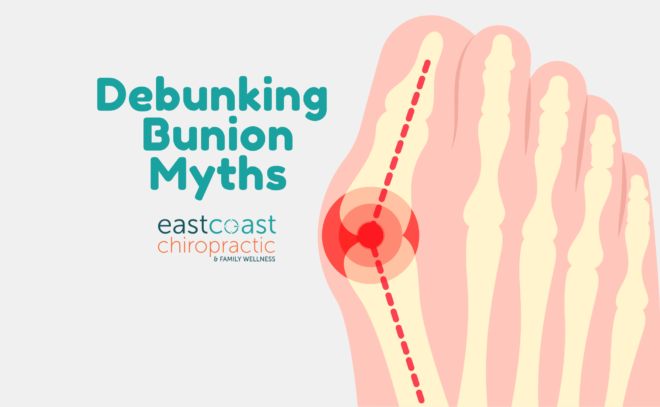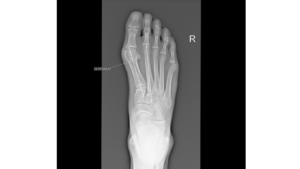Debunking 3 Common Myths About Bunions

Most people can identify what a bunion looks like, but may not understand its cause. Also, we have more control over symptoms and function than you may think!
In this article, we will debunk 3 common myths about bunions. It’s important to note that managing a bunion depends on factors like medical history, age, and severity.
Myth #1: A bunion is a bony growth by the base of the big toe
While it may look like a bony growth, it is actually a subluxation of the first metatarsal due to instability. Poor footwear (narrow toe box) can also contribute to this. An X-ray is how we determine the severity of a bunion. We measure the angle between the first and second metatarsals. This is the grading system:
- Normal: below 8 degrees
- Small: 8-12 degrees
- Moderate: 13-15 degrees
- Large: 16-18 degrees
- Severe: 18+ degrees

Myth #2: Bunions are purely genetic.
False. Bunions are a result of weakness and poor footwear. Genetics can play a role in connective tissue integrity, but we are not completely at the mercy of our genetics. We could use the analogy of diabetes or high blood pressure – yes, genetics could predispose us to these conditions however, our environment and lifestyle plays a much larger role.
Generally when kids are given lots of barefoot time and wide toe box, flexible shoes, their feet develop beautifully without forming bunions or flat feet.
Myth #3: Once you have a painful bunion, you are stuck with it for life.
Not true. Improving big toe mobility and function can alleviate symptoms. Because this is an instability, we need to work on intrinsic foot muscle and big toe strength. Strengthening intrinsic foot muscles and the big toe, along with using wide toe box shoes, can help. While this requires effort and time, it can enhance strength, range of motion, and reduce pain (it also can make the bunion appear smaller!)
Conservative methods like metatarsal pads, orthotics, toe spacers, proper footwear, and foot exercises are effective for small or moderate bunions. Severe cases might need additional interventions such as injections or surgery.
In conclusion, the human body is an incredible, adaptable entity, and we have more control over it than we often realize. Let’s take charge and put our best foot forward today!